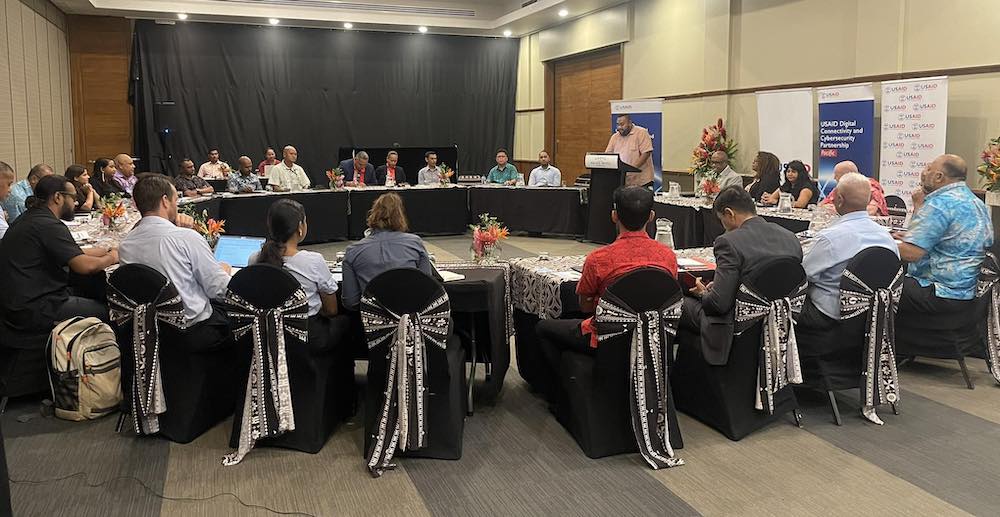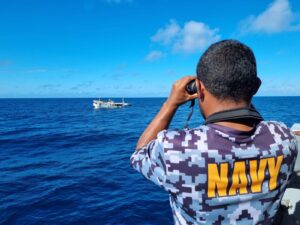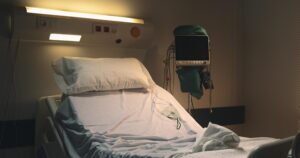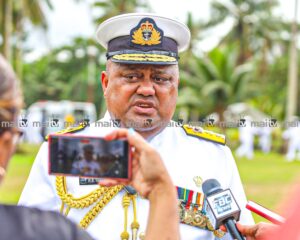Leaders from Fiji’s telecommunication sector convened for a roundtable at the GPH in Suva yesterday to explore solutions for improving digital access and connectivity across the country.
Organised by USAID’s Digital Connectivity and Cybersecurity project, the meeting was opened by Deputy Prime Minister and Minister for Communications Manoa Kamikamica who set the tone early by highlighting the gaps in Fiji’s digital landscape, underscoring the 5% unconnected population, and calling for improvements in affordability, and accessibility to achieve universal connectivity.
Whilst acknowledging the progress made in Fiji with 95% of the population connected, Kamikamica highlighted challenges in remote areas, and the importance of reliable and stable broadband, asserting that “broadband cannot be thought of as a luxury item, access to the internet is just as crucial as access to roads, bridges, airports, and ports.”
He acknowledged Fiji’s ranking as the third most affordable country globally for mobile data (behind Israel and Italy – costing an average, of approximately US$0.09/FJ$0.20 for 1GB of data in Fiji), yet challenged stakeholders to seek innovative proposals to enhance affordability further.
“There is also a need to ensure that the cost of devices and equipment are affordable. In your deliberations today, I would be happy to hear innovative proposals on how we can further drive affordability.
“Secondly, is accessibility and I look forward to your discussion on finding ways to bridge the digital divide here in Fiji. The Government has identified 240 sites that are already part of our Universal Service Access Initiative. We are aware that this number does not fully reflect the number of our unconnected communities. We also need to look at the quality of service. This is equally important. “
Kamikamica called for collaboration to ensure digital services benefit vulnerable groups and communities, envisioning the opportunities that open up for Fiji in connecting far-flung communities like Kadavu, which not only promises economic growth, but also climate adaptation, education, healthcare, poverty alleviation, and achieving SDG targets.
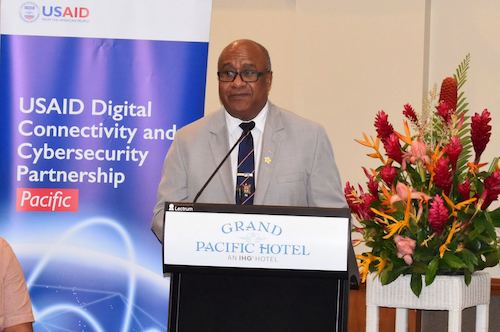

USAID supporting efforts to enhance Fiji’s digital connectivity and cybersecurity
USAID Pacific Islands Mission Director Zeta Semunegus reiterated their commitment to supporting Fiji and the Pacific Islands region in addressing connectivity challenges.
“While investment in the towers, cables, and satellites are critical for communication, we commend the Government of Fiji for providing communities with a platform for diverse voices to help inform the policies and strategies to bridge the digital gap and benefit all Fijians, including the most remote and underserved. The U.S. government is committed to private sector-led economic growth, through investments and grants, to achieve meaningful connectivity where everyone, including women, youth, and persons with disabilities, can gain access to vital information and opportunities to improve the quality of their daily lives.
“We are pleased to partner with the private sector to create sustainable solutions in Fiji and the Pacific. Through our joint efforts, we will bring digital connectivity to all and work closely with government partners to support activities such as community networks, a critical infrastructure cybersecurity framework, and cyber hygiene and cybersecurity training across government institutions. As your committed partner for a free, open, and secure Indo-Pacific region, the U.S. government, through USAID, will continue to improve access and connectivity through safe and reliable networks, and improve the efficient delivery of digital services in a secure manner.”
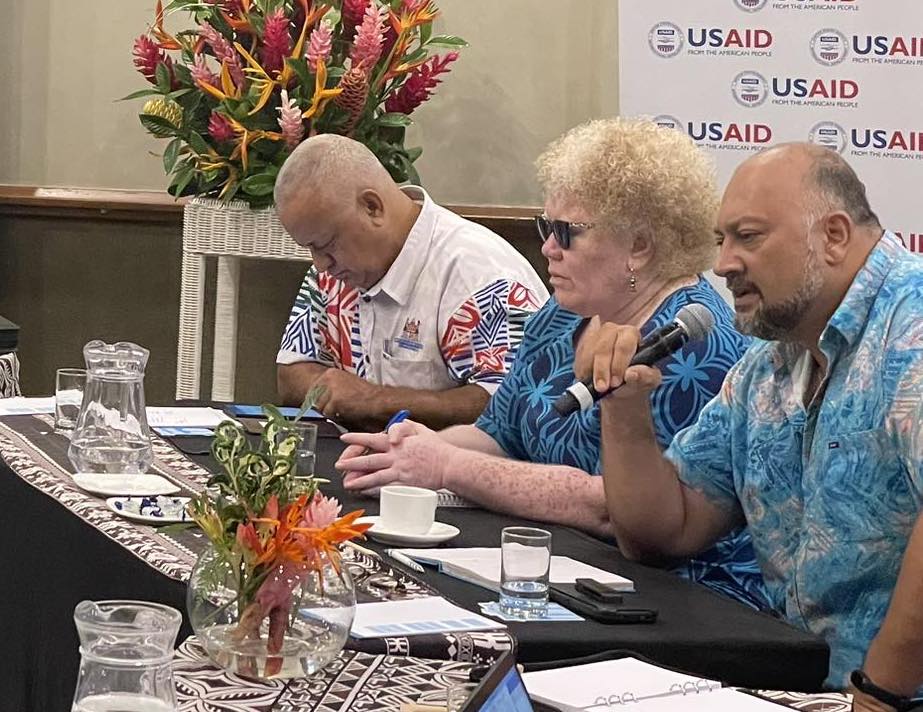
Eyre Highlights Costs of ‘Bridging the Divide’
Telecommunications Authority of Fiji Board Chairman David Eyre welcomed the roundtable initiative as an avenue to discuss ways forward for the sector, strongly highlighting the challenges faced by the private sector in efforts to connect the unconnected 5% of the population.
These include the importance of understanding the needs of different communities, emphasising that access alone does not guarantee meaningful utilisation.
“Everybody has got broadband but who has access to content that matters and makes meaningful change in people’s lives is important,” Eyre said. “Part of this process of bridging the divide is the meaningful component, trying to understand what are the killer apps that drive people to get connected and more importantly be able to enhance their lives.
“The digital government services will be a key part of that, understanding the areas in the community that need special attention. Just because you have access to broadband does not necessarily mean you know how to use it. Those are only some of the concerns we are hoping we can thrash out here.”
He also highlighted other challenges associated with bridging the digital divide including the role of government partnering with the private sector for commercial viability, regulatory considerations, and the need for a sustainable model in pursuing digital government services.
“The other side of this is the ability to partner with the private sector, making sure everyone has commercial viability in pursuing the sector. When we talk about accessing the 5%, these are the most unprofitable communities … but can generate economies that can justify some of these investments, so partners like USAID will help us in that sense in understanding how we can subsidise the cost to the private sector in these far-flung areas.
“The regulation is one big part of it. Now we have a regulation that is in draft form. And I think that regulation will be a key part of that, trying to also understand…. a lot is going around on how you can attract the private sector to operate in these areas. We’ve done well as a country to collect the levy, the Universal Service Fund. Now the challenge is how we can spend it and more importantly make that a sustainable model.”

